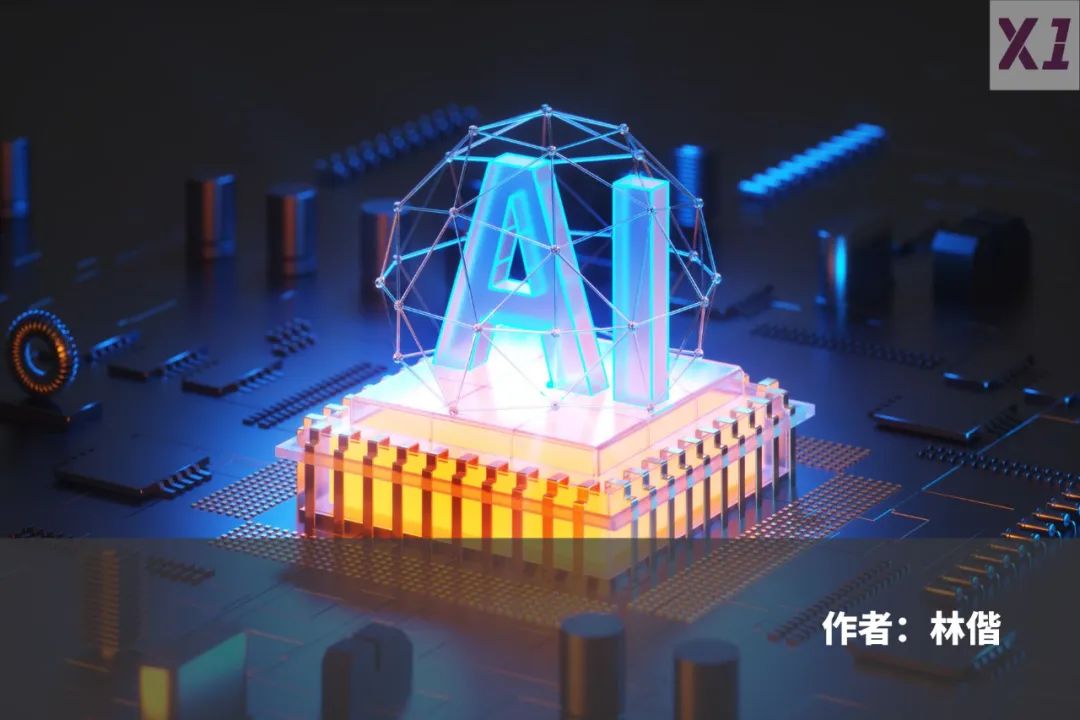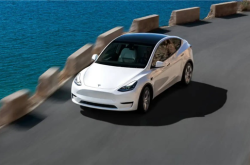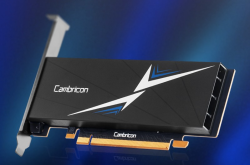百度AI的中场战事
![]() 03/24 2025
03/24 2025
![]() 461
461

Abstract: Baidu AI is undergoing a critical strategic turning point. In March 2025, Baidu announced the full open-source and free availability of ERNIE Bot 4.5 and X1, marking a sharp turn from its decade-long closed-source logic to an open-source ecosystem.
Behind this compromise lies persistent questions about strategic fluctuations. From the shift in the focus of IDL to the "early start but late arrival" in intelligent driving, a classic formula of "heavy investment - low ROI - ambiguous strategy" emerges.
Of course, this time Baidu seems to prioritize substance. After all, the self-developed Kunlun chip card cluster and the largest ecological resources provide it with sufficient room to maneuver.
Baidu is not an opportunist, nor is AI, so patience and substance are the most important.
Below is the main text:
In early 2013, when AI had not yet become a global hotspot, Robin Li boldly declared at the annual meeting that Baidu would establish a research institute initially focused on Deep Learning, named the Institute of Deep Learning (hereinafter referred to as IDL), which became the "Whampoa Military Academy" in the AI and intelligent driving fields.
Twelve years later, when large models dominate and DeepSeek sweeps the globe, Baidu and Robin Li are still exploring a lifeline for Baidu to regain its glory.
On March 16, 2025, Baidu released ERNIE Bot 4.5 and ERNIE Bot X1, and announced a bombshell news: all users would have free access. Additionally, ERNIE Bot 4.5 is Baidu's first native multimodal large model.
It's hard to imagine that a giant company deeply rooted in the AI field for 10 years would experience a transition from "closed source is the future" to "fully open source" and from nurturing models with internal business to fully embracing DeepSeek in just less than two months.
Past deep cultivation may not have been a mistake, and the current lightning-fast transformation still needs to wait for thunderous results. The only certain thing is that Baidu seems to have finally "listened to advice".
However, Baidu has always been a company willing to take a leap after its logic is self-consistent. After experiencing several propositions of "early start but late arrival", grand gestures and high speed cannot save Baidu. The next strategy is the core of Baidu AI's mid-game.

From Closed Source to Open Source, Did Robin Li Make a Mistake?
Among domestic vendors, Baidu is the leader of the closed-source faction, and Robin Li himself has publicly stated his position multiple times.
At the World Artificial Intelligence Conference last July, Robin Li said that open-source large models have value in specific scenarios such as academic research and teaching but are not suitable for most application scenarios. He believed that under the same parameter scale, the capabilities of open-source models are inferior to closed-source models. "If the open-source capabilities are to catch up with closed-source, they need a larger parameter scale, which means higher inference costs and slower response speeds."
However, at the Dubai Summit in February this year, Robin Li's stance took an abrupt turn: "Open source helps technology dissemination and innovation incubation." This was just half a month after DeepSeek released its large model R1.
It is widely rumored in the industry that DeepSeek pierced through Baidu's closed-source logic, but this is probably not comprehensive. Is such a significant shift a complete decision-making mistake by Robin Li and Baidu? It is also difficult to conclude.
In layman's terms, the "more efficient" claim of Baidu's previous closed-source logic was based on comprehensive costs.
According to Robin Li's previous statements, closed-loop commercialization involves numerous users sharing the same resources, sharing research and development costs, and sharing machine resources and GPUs for inference. Concentrating resources in one company and paying for their use allows limited inference cards to maximize their value.
DeepSeek is open source, and its costs have almost been reduced to the lowest in the industry. However, users and developers have to calculate the deployment costs and the GPU usage rate after deployment into the cost model. In an era when major companies are still hoarding cards, it is relatively inefficient for an ordinary user to deploy them independently.
From a practical perspective, a representative phenomenon is that although many organizations and even universities immediately announced their compatibility with the DeepSeek model, few were able to achieve the full-blooded version after the hustle and bustle. A 72B model obviously cannot defeat the advantages of a closed loop.
Robin Li's statement that "open source helps technology dissemination and innovation incubation" is quite profound, and it likely represents Baidu's realization of an important issue: the popularization of large models must first allow users to use them, and only with acceptance can subsequent stories unfold. This logic is the same as BYD's approach to intelligent driving inclusivity.
More and more vendors are also respecting this ironclad law.
The once closed-source king OpenAI has revealed news of "free plus open source", while Alibaba's Tongyi Qianwen and Tencent's Hunyuan have taken an early step in open-source layout, and Zhipu AI also announced the open source of its full range of large models in March this year.
Under the general trend, it is difficult for Baidu to stay aloof. After experiencing several rounds of public opinion turmoil, open source is also an important way to restore its reputation and product usage rate.

Baidu in Repetition
For Baidu, is "persistence" a compliment or an insult?
The reason for this question is that Baidu's announcement of open source in March revealed a familiar atmosphere of "compromise".
Baidu's transformations often come with a classic cycle of "heavy capital investment for ambitious goals - poor ROI - being pressured by upstarts - ambiguous goals".
IDL, established in 2013 with a star-studded lineup, was the first to systematically demonstrate the "power law growth" of deep learning, laying an important theoretical foundation for the subsequent development of large language models. However, Baidu's focus at that time was on autonomous driving and even car manufacturing.
After the explosion of ChatGPT, ERNIE Bot, which was launched shortly afterward, was fast but not advanced enough.
When intelligent driving for automobiles was in full swing, Baidu once aimed at passenger vehicle assisted driving and repeatedly declared that it would not abandon L2-level intelligent driving, but there were few actions in mass production, and it strategically abandoned Jiyue Automobile.
Because of this, there is the industry rumor of "early start but late arrival".
It is true that it is never too late to mend, and it is also true to hold fast to what one believes in. The key lies in which path Baidu chooses. From the effect, this approach of neither achieving great success nor making major mistakes does not seem to have captured enough high-quality market attention.
A typical example is Jack Ma and Alibaba Cloud. When Alibaba Cloud was first established in 2009, cloud computing was still a new technology and not favored by many. Wang Jian, the former deputy director of Microsoft Research Asia who led the team, often felt helpless.
However, Jack Ma directly stated at Alibaba's annual meeting in 2012: "I will invest 1 billion yuan in Alibaba Cloud every year for ten years. If we can't make it, we'll talk about it later."
It was with Jack Ma's support and the strengthened confidence within the company that Alibaba Cloud's research and development progressed rapidly, creating a case where there would be no Alibaba Cloud without Jack Ma.
Baidu is not without successful segments either. The persistently developed Robotaxi service, Luobo Kuaipao, has now created the first batch of truly driverless taxis in China and has become a leading enterprise in promoting the opening of L4 road rights.
From this perspective, regardless of whether users give Baidu patience, Baidu must first give itself patience.

How Baidu Will Play the Second Half
The recently released ERNIE Bot 4.5 is Baidu's first native multimodal large model.
At the technical level, the market should trust Baidu's understanding. Compared to ordinary multimodal large models, the native multimodal large model excels in achieving a unified understanding of the complex world through a unified architecture.
In terms of inference costs, the inference cost of ERNIE Bot 4.5 is 1% of GPT-4.5, while the inference cost of X1 is about half that of Deepseek R1.
Being able to achieve this is also related to the Kunlun chip behind it.
It should be noted that one of the reasons why large models are difficult to reduce in price and open source is that the tightness of computing power leads to high training costs, inference costs, and even usage costs of large models. To reduce the computing power costs of large models, self-developed chips have become a difficult but highly effective path.
In this regard, Baidu Cloud officially announced the successful lighting up of the Kunlun Chip III 10,000-card cluster this year, which is also the first domestically officially lit up self-developed 10,000-card cluster. It not only solves the computing power problem for Baidu's own large model development but also provides resources for the development of the domestic large model industry.
The construction of large-scale GPU clusters naturally poses two challenges: high costs and difficult operation and maintenance. Only as a leading player in the domestic large model field can Baidu use heavy capital to think about how to build, manage, and maintain such a huge GPU cluster, which is Baidu's advantage.
In addition, compared to vendors that go it alone, Baidu's native AI products have already established a portion of the audience, and its channels are far richer than those of small and medium-sized vendors.
For Baidu, even if it follows the crowd, it still surpasses most similar companies.
However, at the very beginning of the race, it is important to consider the sustainability and firmness of this follow-up.
According to Robin Li's explanation during Baidu's Q4 and full-year 2024 earnings call, Baidu hopes to promote the performance upgrade and cost reduction of ERNIE Bot through open source, enhance the market's perception of ERNIE Bot's capabilities, and promote its widespread application in more industries.
Obviously, the distance from large models to the popularization of the smallest user unit is still far, and how long this turn can be sustained is a strategic issue.

Epilogue
Not only is it a sharp turn from closed source to open source, but every step Baidu has taken in the past has been on the cusp of AI, yet it has also been deeply entrenched in controversy.
The current transformation is a general trend towards the upgrading of single technological points to an all-round ecological competition. The good news is that Baidu's AI narrative has never lacked hardcore technology, but it still needs to be vigilant against repeated strategic fluctuations in the past.
Baidu is not an opportunist, nor is AI, so patience and substance are the most important.






